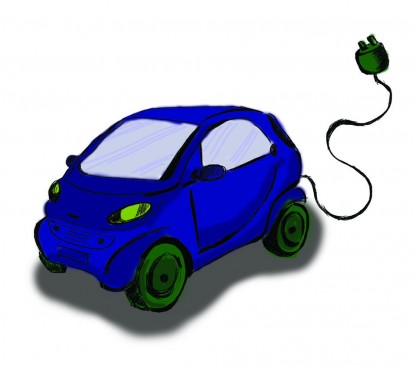Electric vehicle popularity is racing ahead in Norway, and a report by the Pacific Institute for Climate Solutions (PICS) at the University of Victoria has suggestions for what B.C. can do to catch up.
Norway has much in common with B.C. according to the report, released Oct. 26, including similar population size, mountainous geography, and hydroelectric power. Norway is also a heavy oil producer, and “like B.C., something on the order of 40 per cent of their emissions come from transportation,” according to PICS executive director, Dr. Tom Pedersen.
“They’re doing two things,” Pedersen said. “They’re trying to reduce their emissions while continuing to produce a lot of oil, and some people accuse them of hypocrisy, but that’s not fair; they’re using their natural resource base to construct a different future for the nation.” Norway being 100 per cent hydroelectric, the obvious answer to their emissions problem was to use electricity for transportation, Pedersen said.
While B.C. has the highest electric vehicle sales in Canada, mostly thanks to a provincial Clean Energy Vehicle Program which offers a $5 000 rebate off the cost of a new electric vehicle, Norway has over 74 000 electric vehicles on the road since it began to encourage the use of electric vehicles in 2009. That’s over 30 times more than B.C.’s 2 400. How did Norway accomplish this feat in such a short time?
Surveys had shown that “range anxiety,” the concern for battery life over distance, was the biggest apprehension when it came to making the switch to electric, so the Norwegian government-funded charging stations across the country. Norway now has over 5 600 public charging stations, whereas B.C. has under 600.
To really drive the incentive home, the Norwegian government added a range of perks given to electric vehicle drivers including use of bus and taxi lanes, free parking anywhere in the country, road toll exemption, and — wait for it — free ferry rides. And unlike B.C.’s tax incentive program, which ends when the money runs out, Norway’s tax-free new electric car incentive is open-ended.
The PICS report’s recommendations for B.C. include public-sector charging infrastructure, highly desirable perks like those offered in Norway, and open-ended tax relief. The report cautions that municipal cooperation would be necessary to deliver the perks, and cross-party consensus would be needed to maintain support should the government change. Also, Canada would need legislation at the federal level for tax incentives on imported vehicles, an idea not out of line with the new federal government’s platform which includes “Green Bonds” for funding environmental projects such as electric vehicle charging stations.
Pedersen points out that these incentives are a large investment for a government, but once significant penetration in the market is achieved, the incentives become unnecessary. “Once you get over a certain threshold,” he says, “these things become self-sustaining — you don’t need to maintain that level of incentive.”
The full PICS report can be read at pics.uvic.ca.









